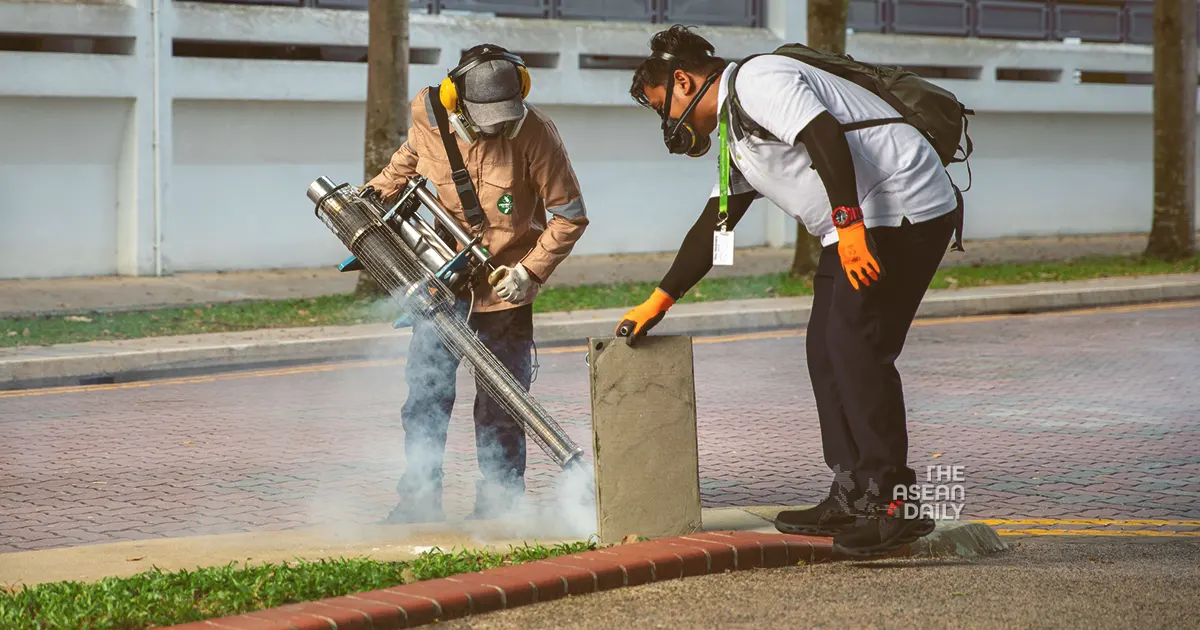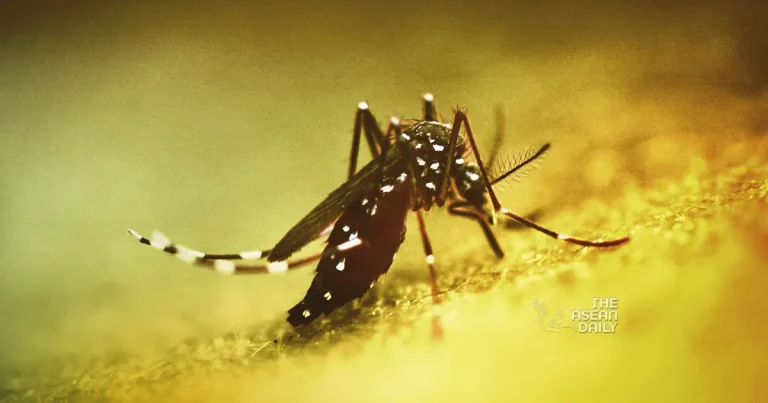30-3-2024 (SINGAPORE) As the sun’s unforgiving rays beat down upon the tropics, an invisible adversary lurks in the streets and alleyways of Southeast Asia’s urban jungles. Dengue fever, a mosquito-borne viral disease, has long tormented the region, leaving a trail of suffering and fatalities in its wake. Despite concerted efforts by governments and health authorities, this tenacious foe continues to outmanoeuvre their defences, claiming thousands of victims each year.
When Singaporean entrepreneur Benjamin Loh succumbed to a raging fever last July, his initial suspicion was that he had contracted COVID-19 once again. However, a subsequent blood test revealed a far more sinister culprit – dengue fever. His platelet count had plummeted to a life-threatening 20,000 per microlitre, a mere fraction of the normal range. Mr Loh found himself hospitalised for nearly a week, battling a constellation of debilitating symptoms that left him utterly drained, both physically and mentally.
Across the causeway in Jakarta, 28-year-old Patricia Tambunan endured a similar ordeal, confined to a hospital bed for over seven days as the merciless virus ravaged her body, inducing relentless bouts of nausea and vomiting. Their harrowing experiences are but two threads in the tapestry of suffering that dengue fever has woven across Southeast Asia, where tens of thousands have fallen victim to its onslaught in recent years, with hundreds succumbing to its lethal embrace.
The World Health Organization (WHO) identifies dengue as a viral infection transmitted by the Aedes mosquito, a genus that thrives in the tropical and sub-tropical climates found throughout the region. While many infections are asymptomatic or mild, the virus can occasionally unleash a torrent of severe complications, culminating in death. Alarmingly, dengue’s reach has expanded beyond its traditional boundaries, infiltrating regions once deemed impervious, from France and Italy to Chad and even the United States.

Southeast Asia, however, remains the epicentre of this scourge. In February, Singapore’s National Environment Agency (NEA) sounded the alarm, urging “immediate action” to suppress the burgeoning Aedes mosquito population as dengue cases escalated. The city-state has witnessed a stark upward trajectory since 2018, with a staggering peak of over 35,000 cases and 32 fatalities in 2020. Although a reprieve emerged in 2021, the virus swiftly regained its foothold, inflicting over 32,000 cases and 19 deaths in 2022.
Malaysia’s predicament is equally dire, with over 123,000 dengue cases recorded in 2023, an 86% surge from the previous year’s tally of approximately 66,000. The grim toll of 100 fatalities last year nearly doubled the 2022 figure. As of mid-March 2024, the nation has already witnessed 38,524 cases and 24 deaths, portending another harrowing season.
Indonesia, too, has borne the brunt of dengue’s wrath. In January alone, the archipelago nation grappled with nearly 18,000 cases, a substantial increase from the 12,500 reported in the same month last year. By early March, the country had recorded over 21,000 cases and a staggering 191 deaths, prompting the Cianjur regency in West Java to brace for a potential emergency if the outbreak persists unabated.

Experts attribute this resurgence to a confluence of factors, including the El Niño weather phenomenon, which ushers in hotter temperatures that accelerate the mosquito life cycle and viral incubation periods. The rainy season, exacerbated by El Niño, creates stagnant puddles that serve as fertile breeding grounds for Aedes aegypti larvae. Climate change and rapid urbanisation further compound the crisis, providing ample opportunities for the resilient mosquitoes to thrive and propagate their deadly cargo.
In the face of this onslaught, governments across Southeast Asia have mobilised an array of countermeasures. Singapore’s Project Wolbachia, initiated in 2016, involves releasing male Aedes aegypti mosquitoes carrying the Wolbachia bacteria, which renders their offspring unviable upon mating with urban females. This innovative approach has yielded promising results, with residents in areas subjected to Wolbachia releases up to 77% less likely to contract dengue.
Indonesia has embraced a multi-pronged strategy, combining traditional methods such as community clean-ups, larvae eradication, and mosquito repellent usage with the impending deployment of Wolbachia mosquitoes in six major cities. Malaysia, too, has harnessed the power of Wolbachia, reporting declines of 45% to 100% in dengue cases across 19 localities where the bacteria-laden mosquitoes have been released.
Yet, the battle is far from won. Misinformation and lack of public awareness have hindered the rollout of Wolbachia in Indonesia, with fake claims circulating on social media regarding the mosquitoes’ alleged links to depopulation agendas and the transmission of other diseases. Singapore, while largely spared such hysteria, grapples with the challenge of maintaining public vigilance, as complacency can swiftly erode hard-won gains.
Experts advocate a multi-faceted approach to combat this formidable foe. Scaling up initiatives like Project Wolbachia and developing more effective and safer vaccines are paramount. Integrating artificial intelligence and innovative urban design principles could help minimise mosquito breeding grounds and predict outbreaks before they occur. Moreover, addressing socioeconomic disparities that perpetuate vulnerabilities and hinder access to healthcare could prove pivotal in stemming the tide.
As the war against dengue rages on, success remains a fleeting and relative concept. Authorities must brace for the ebb and flow of outbreaks, adapting their strategies to counter the virus’s relentless evolution. Yet, complacency is not an option, for the stakes are high – the well-being and lives of millions hang in the balance.




